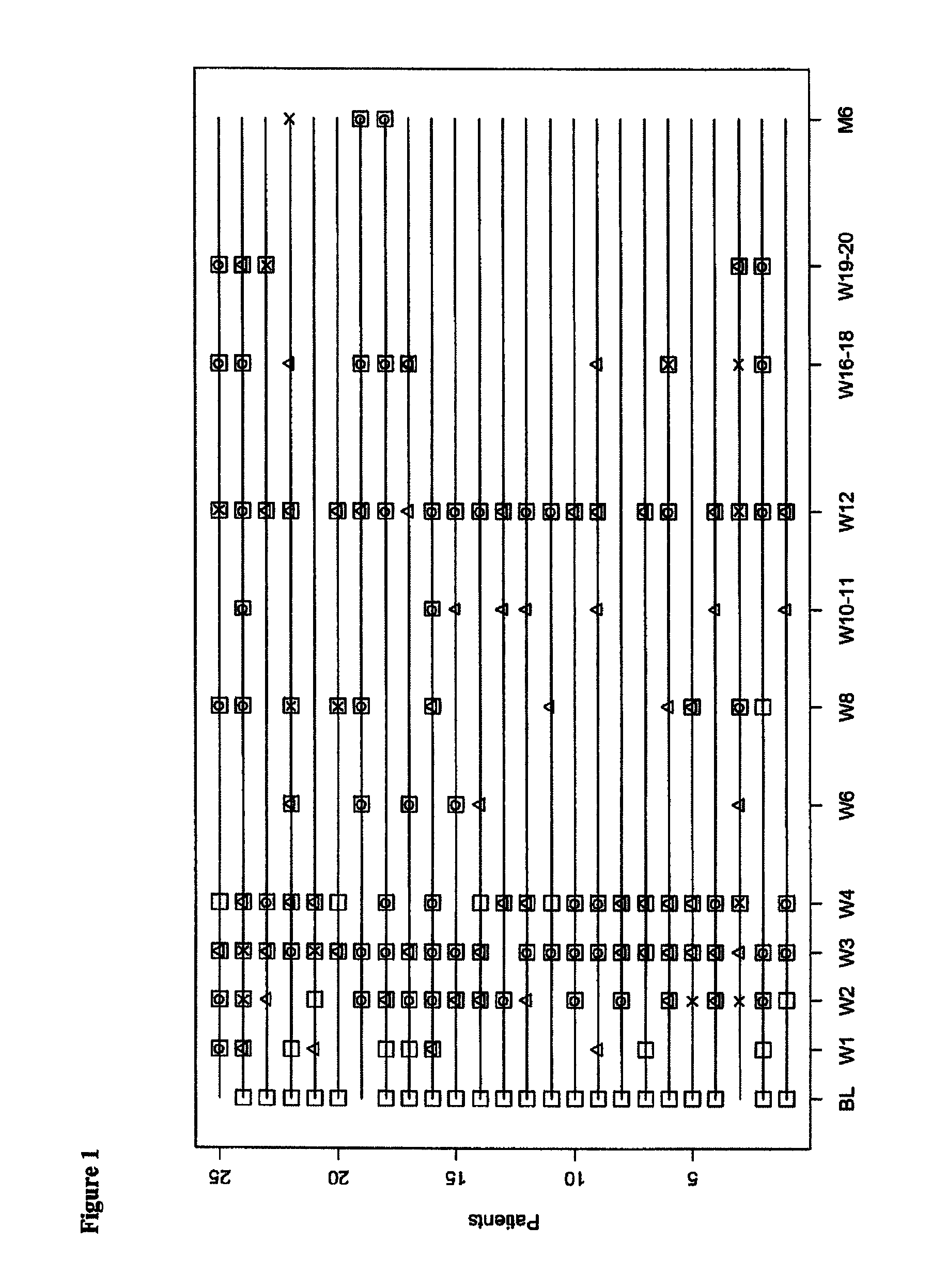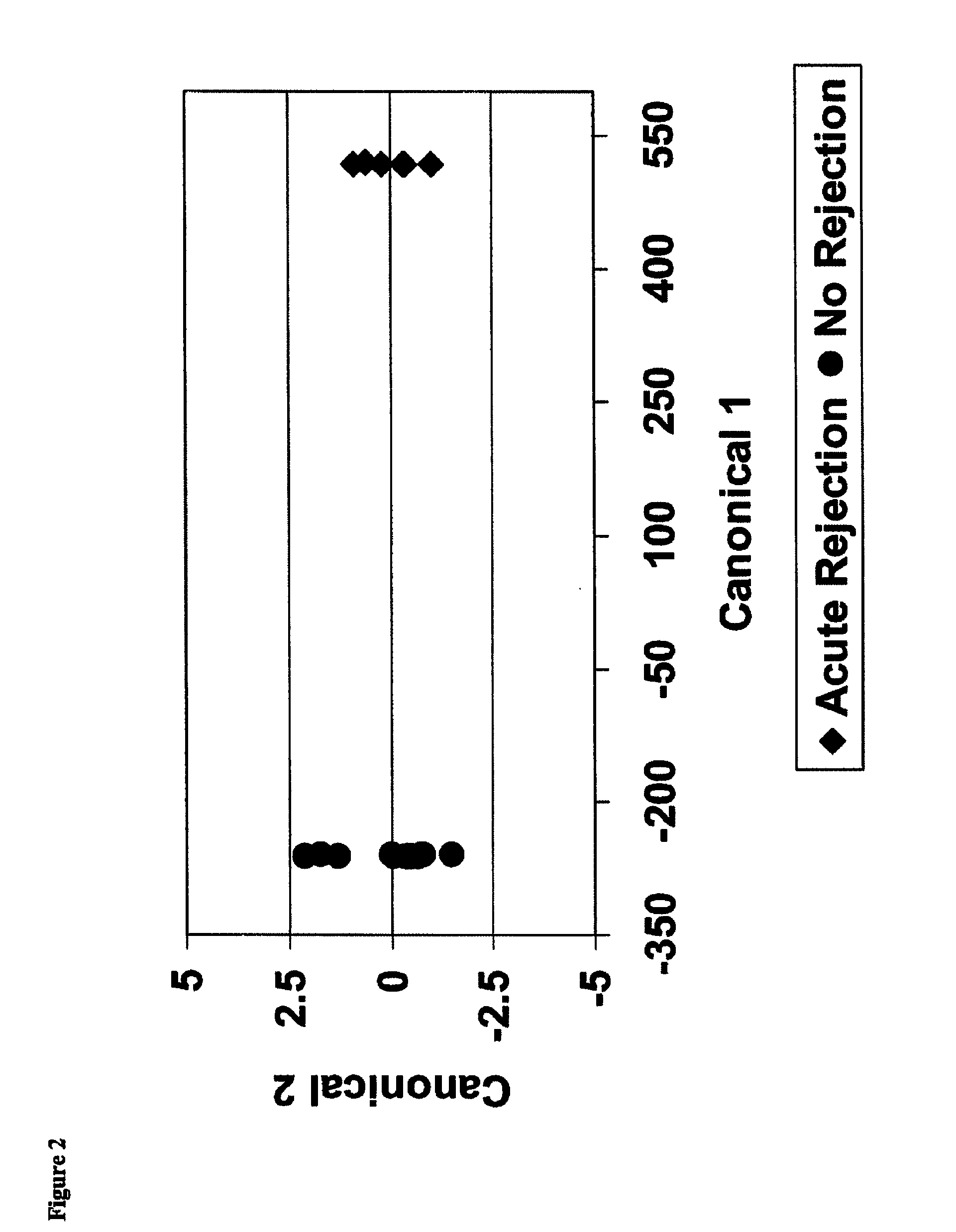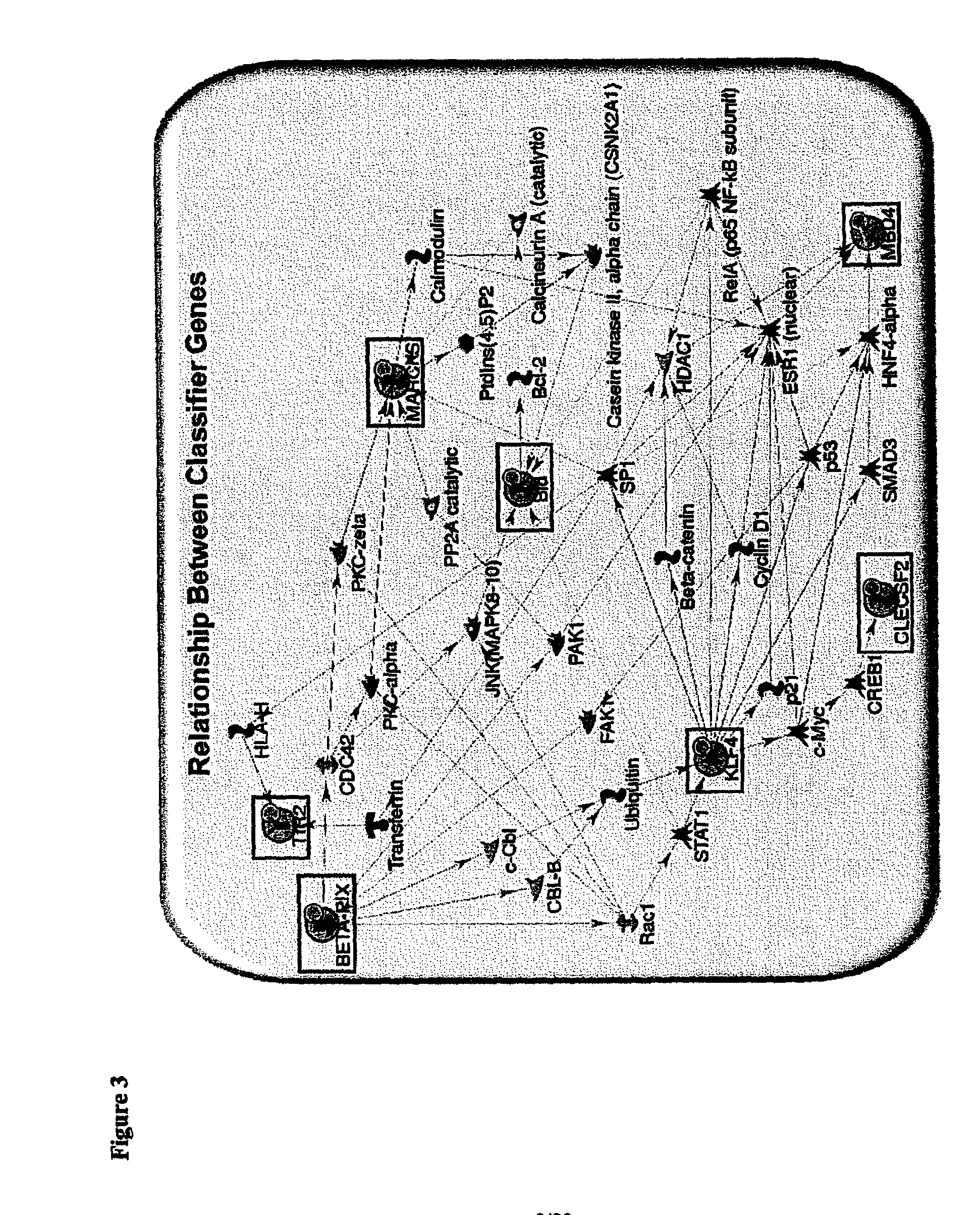Methods of diagnosing acute cardiac allograft rejection
a technology of allograft and diagnosis method, which is applied in the field of diagnosis of acute allograft rejection, can solve the problems of rapid graft dysfunction and failure of tissue or organ, reproducibility and interpretation of biopsy results, and inability to diagnose acute allograft rejection
- Summary
- Abstract
- Description
- Claims
- Application Information
AI Technical Summary
Benefits of technology
Problems solved by technology
Method used
Image
Examples
example 1
Genomic Expression Profiling
[0271]39 differentially expressed probe sets were identified, each of which demonstrated at a least 2-fold difference between samples from acute rejection patients (AR) and those from non-rejection patients (NR) (Table 6). A subset of twelve markers was identified which consistently differentiated AR and NR subjects (indicated in Table 6 with “++”). As per FIG. 2, the increase or decrease in the TRF2, SRGAP2P1, KLF4, YLPM1, BID, MARCKS, CLEC2B, ARHGEF7, LYPLAL1, WRB, FGFR1OP2 and MBD4 markers allowed for categorization of each sample as an AR or NR.
TABLE 6Differentially expressed probe sets, exhibiting at least a 2-fold difference between AR and NR subjects.The target sequence is the portion of the consensus or exemplar sequence from which the probesequences were selected. The consensus or exemplar Sequence is the sequence used at the time ofdesign of the array to represent the transcript that the GeneChip U133 2.0 probe set measures. Aconsensus sequence ...
example 2
Biological Pathways Based on Genomic Expression Profiling
[0272]Using a combination of bioinformatics and literature-based approaches, various pathways have been identified based on selected differentially expressed genes. Interactions between them have also been elucidated in our current results. FIG. 3 illustrates a pathway-based relationship between the biomarkers ARHGEF7, TRF2, BID, MARCKS, KLF4, CLEC2B and MBD4.
[0273]Interactions between the biomarker genes and / or gene products:
1. BETAPIX→Rac1→STAT1→KLF4
[0274]BETA-PIX→Rac 1 (Park et al, 2004. Mol Cell Biol 24:4384-94)[0275]Rac1→STAT1→KLF4 (Uddin et al, 2000 J. Biol Chem 275:27634-40; Feinberg et al 2005. J. Biol. Chem. 280:38247-58)
2. KLF4→(c-MYC→CREB1)→CLECSF2[0276]KLF4→c-MYC (Kharas et al 2007. Blood. 109:747-55)[0277]c-MYC→CREB1 (Tamura et al 2005 EMBO J. 24:2590-601)[0278]CREB1→CLECSF2 (Zhang et al 2005. Proc Natl Acad. Sci. 102:4459-64)
3. STAT1→BID
[0279]STAT1→KLF4 (Uddin et al, 2000 J. Biol Chem 275:27634-40; Feinberg et al...
example 3
Metabolite Profiling
[0290]Metabolite profiles of subjects were obtained as described. 33 metabolites (Table 3) were identified and quantified in 53 serum samples obtained from the subject population. Comparisons between AR and NR subject samples. Subject samples were identified as AR or NR based on ISHLT biopsy score (≧2R for AR, 0R for NR). ISHLT biopsy scores are determined by a pathologist's assessment of an endomyocardial biopsy (Stewart et al 2005, supra.)
[0291]Metabolites exhibiting a statistically significant change are listed in Tables 7a-d.
[0292]As illustrated in FIG. 10, the absolute concentration for each of taurine, serine and glycine allowed for determination of the rejection status of each of the subjects in the population tested. All subjects having an ISHLT biopsy score ≧2R were correctly assigned a rejection status of AR; while all subjects having an ISHLT biopsy score 0R were correctly assigned a rejection status of NR by metabolite profiling.
[0293]When the concent...
PUM
 Login to View More
Login to View More Abstract
Description
Claims
Application Information
 Login to View More
Login to View More - R&D
- Intellectual Property
- Life Sciences
- Materials
- Tech Scout
- Unparalleled Data Quality
- Higher Quality Content
- 60% Fewer Hallucinations
Browse by: Latest US Patents, China's latest patents, Technical Efficacy Thesaurus, Application Domain, Technology Topic, Popular Technical Reports.
© 2025 PatSnap. All rights reserved.Legal|Privacy policy|Modern Slavery Act Transparency Statement|Sitemap|About US| Contact US: help@patsnap.com



